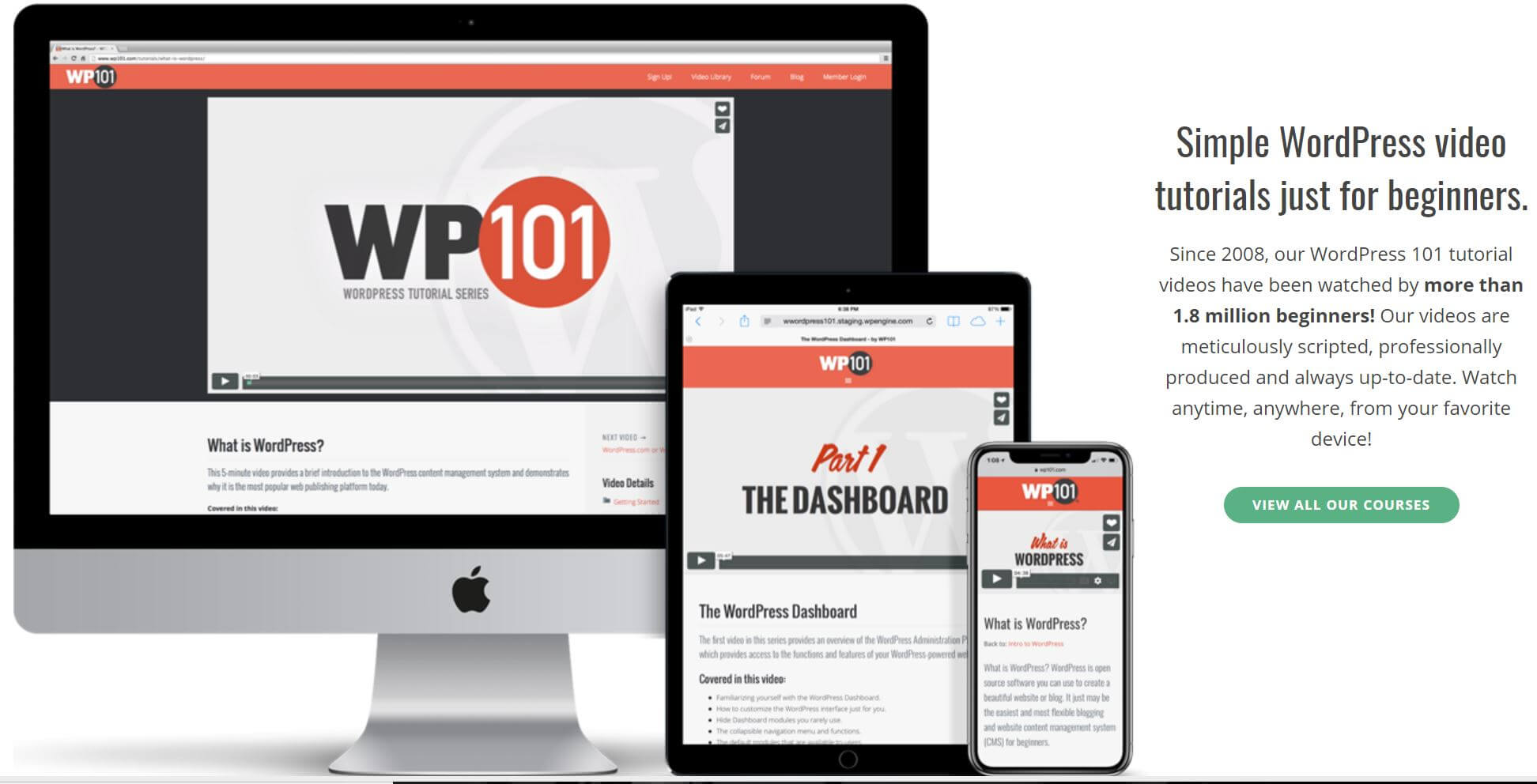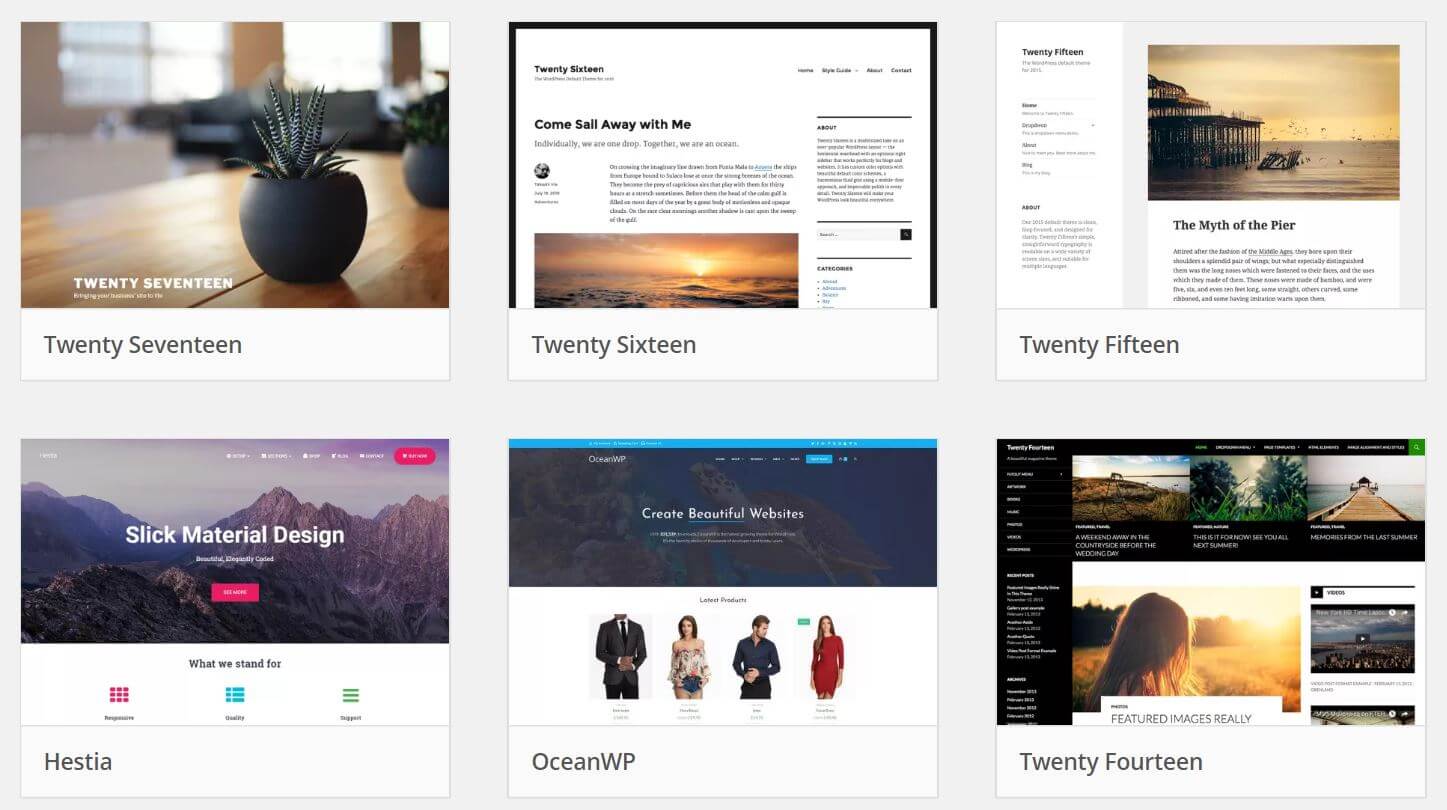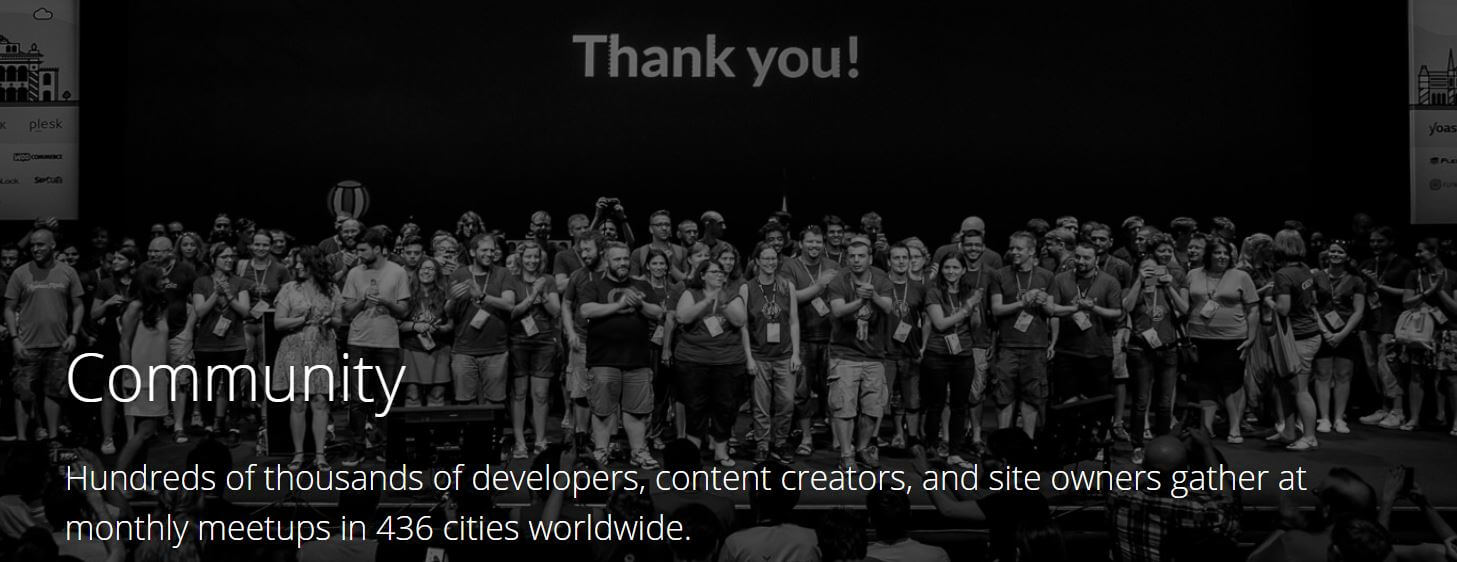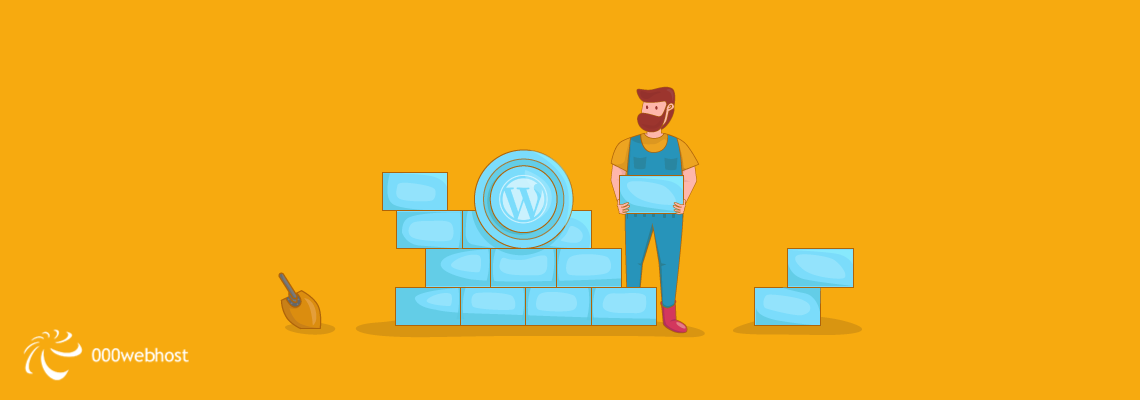Thanks to the incredible popularity of WordPress, opportunities for development abound. Whether you want to create useful plugins, weave gorgeous themes, or improve the core mechanics of WordPress, you can break into the field with a little time and effort. Of course, simply Googling “how to become a WordPress developer” will present a bewildering array of paths to choose from.
To simplify your journey towards becoming a WordPress developer, you’ll want to approach it methodically. This involves narrowing down your focus, identifying your skills, finding a niche, and learning as much as you can about the platform beforehand. Fortunately, there’s a large community out there willing and ready to support you on your quest.
In this article, we’ll explain exactly what a WordPress developer does. Then we’ll explore six essential steps you’ll need to take in order to become both a WordPress expert and a competent developer for the platform. Let’s jump in!
What a WordPress Developer Actually Does
A WordPress developer is a professional who works with the basic coding and infrastructure of the WordPress platform, to improve WordPress itself, or to create entirely new products. Typically, WordPress developers perform some or all of the following tasks:
- Creating and customizing plugins and themes.
- Developing code and troubleshooting for WordPress core (that is, the actual software of WordPress).
- Working closely with clients to help design and build their WordPress websites.
- Ensuing that client websites are maintained efficiently.
- Improving the accessibility of the WordPress platform.
In order to do these things efficiently, the competent developer also has to be a WordPress expert. That is, they should have a thorough understanding of each part of the platform, as well as the various programming languages used to run it (which we will discuss in greater detail further on).
Before we approach the question of how to become a WordPress developer, let’s first talk about exactly why you might want to do so.
Why You Might Want to Get Involved in WordPress Development
In addition to the fact that WordPress developers are in increasingly high demand, there are plenty of reasons this field can be beneficial:
- There is good money to be made if you become an adept developer, and manage to locate the right niche.
- You can develop for WordPress as a freelancer. This means it’s possible to be your own boss, work from home, and set your own schedule.
- WordPress has a broad community of users who are eager to help, meaning it’s easy to gain access to the support you need.
- The skills you acquire (especially in regards to the main languages of WordPress) will be readily applicable to a huge variety of industries and niches.
If you have a creative streak, an interest in coding, and a willingness to immerse yourself in the mechanics of the world’s most popular Content Management System (CMS), learning how to become a WordPress developer will be worth your while. It’s also worth considering if you’re looking for a job that’s ‘future-proof’.
Of course, making the decision to enter this field is relatively easy. The real trick lies in learning how to become a WordPress developer. Let’s walk through what it takes.
How to Become a WordPress Developer (In 6 Steps)
The process of becoming a WordPress developer first involves determining what knowledge you already have, and what you’ll need to learn. Then you’ll want to pick an area or niche that best suits your goals and skill set, and adopt the best practices to break into that field. Let’s jump right in!
1. Understand the Primary Skill Sets Required

Before you can learn how to become a WordPress developer, it’s important to understand the platform’s various programming languages.
The acclaimed philanthropist Charlie Munger once said: “Knowing what you don’t know is more useful than being brilliant”. This maxim applies perfectly to WordPress development. It’s vital to identify the preexisting knowledge you may have that can boost your development journey, as well as the areas where your knowledge is lacking.
The most vital thing any WordPress developer needs to understand is the languages the platform uses. Let’s look at each, one by one:
- HTML (Hypertext Markup Language): This foundational language is powerful and fairly easy to master. It’s comprised of markup codes (elements) that dictate how different aspects of a page will be displayed. These elements may include page titles, headings, paragraph text, data tables, and so on. As a very basic example, use of the HTML code <title>Learning HTML</title> would set “Learning HTML” as the title of a page.
- CSS (Cascading Style Sheets): Whereas HTML comprises the building blocks of web pages, CSS is used to dictate the way elements look. CSS controls aspects like font types and colors, page layouts, click effects, and other stylistic facets. For example, the HTML element for some body text might also include the CSS code to specify what color the text should display in (such as: {background-color: darkgreen;}).
- PHP (Personal Home Page): PHP is a somewhat misleading acronym. Over the years, it’s come to more aptly stand for Hypertext Preprocessor (since it’s applicable to all areas of a site, not just your home page). It can be used for many functions, including auto-generating files, accessing databases, encrypting data, and much more. Fortunately, there are plenty of online guides for mastering PHP, which will come in handy when learning how to become a WordPress developer.
- MySQL (My Sequel): Finally, MySQL is an open source relational database management system. In a nutshell, WordPress uses PHP to retrieve and store data from MySQL databases. Important site administrative features, such as user roles, are made possible on WordPress using MySQL. For that reason, a developer should at least have a rudimentary knowledge of its capabilities.
You don’t necessarily have to be a master of all these languages. However, it is best to be adept at at least a few before learning how to become a WordPress developer. This will help you better market yourself in the field, and more readily address client expectations.
Once you’ve determined that you understand the basics required, you’ll need to learn how they can be applied to the WordPress platform. To do this, you’ll need to be nothing short of a WordPress expert (at least when it comes to the fundamentals).
2. Learn All You Can About WordPress

Completing an online course (such as the one offered by WordPress101) is a useful way to fast-track your journey to becoming a WordPress expert.
Before you tackle the question of how to become a WordPress developer, you’ll need to learn as much as possible about the platform itself. After all, the more you know, the more you can do. The good news is that there are plenty of resources available to take you from being a complete novice to a WordPress expert.
The first step you should take is to set up a WordPress sandbox. This will enable you to rapidly get a feel for the dashboard, and to play around with the functions of the platform in a secure environment. By using a sandbox, you’ll also be able to follow along with the tutorials provided in many online WordPress courses.
Although it will likely require a financial investment, completing a WordPress course will help you fast-track your learning progress. Most WordPress courses present information in a well-structured and beginner-friendly format, and can be easily referenced at later points. Popular examples include WordPress 101 (which also contains tutorials for essential plugins), WP Apprentice, and the WordPress for Beginners course on Udemy.
Of course, no overview of WordPress learning resources would be complete without reference to the WordPress Codex – the official WordPress wiki. This is an invaluable resource for searching terms and finding officially-approved explanations and tutorials. It can also be a useful reference when coding or contributing to the platform.
Finally, it’s smart to subscribe to various WordPress blogs and YouTube channels. These serve as an excellent way keep up to date with WordPress trends, and discover ways to use the platform more efficiently. After you’ve acquired a solid grounding in WordPress basics, you’ll be in a much better position to tackle the question of how to become a WordPress developer.
3.Choose the Area of Development You’ll Focus On

There are many areas of WordPress you can develop for, such as plugins, themes, or the core platform itself.
WordPress is renowned for being a broad, versatile, and constantly-evolving CMS. This is good news for prospective developers, as it means there are entry points that cater to a broad array of interests and skill sets. Although a strong technical knowledge is crucial, niches such as theme and plugin development also present opportunities to be creative. Once you’ve made the decision to learn how to become a WordPress developer, you’ll want to start by focusing on one of the platform’s three main components.
WordPress Core
WordPress development for the core (the default files that make up the back-end functionality for the platform) involves a number of tasks. These include identifying and resolving bugs, addressing user inquiry tickets, improving translations, and submitting improvement suggestions to WordPress trac.
Despite being largely a voluntary area (since WordPress is open-source), core development is an excellent way to develop knowledge that can be applied to other areas. If you’re a complete beginner to development, or don’t know much about the key WordPress languages yet, this is an opportunity to learn. The Core Contributor Handbook is an excellent place to find out more.
Themes
Focusing on developing themes is a good way to attract clients (providing that you adhere to best practices). Since themes serve as the graphical front-end styling for a WordPress site, prospective developers with a background or interest in graphic design may find this area appealing.
An understanding of HTML and CSS is crucial for theme development, as these languages are used to dictate the appearance of a theme’s elements. If you’re interested in this area, the Theme Developer Handbook can tell you most of what you’ll need to know.
Plugins
Without plugins (software extending the functionality of the CMS without affecting core files), WordPress would not have attained its current prominence. If you have a strong interest in modifying WordPress to achieve a particular goal, and some grounding in PHP and HTML, this is the area for you.
Although plugin development isn’t typically as lucrative as theme development, the market also isn’t as saturated. Once you’ve learned the basics, and developed a plugin that you feel has an audience, you can consider selling it on sites such as CodeCanyon. Your first step towards learning how to become a WordPress developer for plugins will be to read through the Plugin Developer Handbook.
And More!
Of course, there are other areas of WordPress where you can try your hand as a developer. For example, REST API development could be your thing if you’re interested in creating applications for WordPress. However, this involves fairly complex coding practices. Focusing on one of the three major areas we’ve outlined above is a better way to start, unless you have a lot of development experience already.
4. Prepare Yourself For Potential Pitfalls

The Debug This plugin is an excellent tool for resolving common bugs in the WordPress platform.
Regardless of the area you wish to focus on as a WordPress developer, you’ll likely encounter problems from time to time. This isn’t at all unusual. However, failure to address these problems could mean hours of costly downtime, and even the loss of clients.
System bugs constitute one major recurring problem. They can cause everything from minor formatting issues to major system crashes. Learning some solid WordPress debugging practices is crucial, in order to save yourself from even greater headaches down the line. WordPress plugins such as DebugThis can also help you to rapidly detect and resolve bugs.
In addition to bugs, you’ll need to pay close attention to potential security issues. Although the WordPress core is very secure by default, it’s good practice to make sure the installation you are using for development is as safe as possible. When you put what you’ve developed out into the world, it can be vulnerable to a variety of attacks if you aren’t careful. By familiarizing yourself with proven WordPress developer security practices, you can proceed with greater confidence.
Finally, to avoid losing hours of work (or, even worse, putting client data at risk), you should make a habit of backing up your WordPress development projects regularly. Sites like GitHub can help you track and store your projects safely. After you’ve armed yourself with the knowledge required to resolve potential problems, you’ll be ready to get your feet wet some actual development.
5. Set Up a Local Development Environment

Atom is a popular text editor program, enabling you to test various codes in your local development environment.
If you’re focusing on theme or plugin development, it’s best to conduct your work locally. This is to ensure that the testing and troubleshooting you conduct when developing is confined to your system. Working in a live environment can lead to catastrophe, especially if you are dealing with a client’s site. Fortunately, WordPress makes it relatively easy to set up a local development environment.
The first thing you’ll need is a server stack. This is the software that will form the operational infrastructure for development on your computer. This may sound a little daunting. Fortunately, there are well-documented bundled server stacks that you can download and use with little experience. These include MAMP (for Mac users only) and XAMPP (for both Windows and Mac users). There are many helpful guides are available for getting both MAMP and XAMPP up and running on your computer.
Once you have a stack that will facilitate local development installed, you’ll need an area to work on your code. This is where the text editor comes into play. Although you can use just about any standard editor (such as Notepad), it’s recommended to use a more advanced system. Atom, for example, lets you share your workplace with other developers to facilitate smooth collaboration. Plus, it lets you split your work into multiple viewing panes.
With these two elements in place, you can begin developing projects on your WordPress installation. If you want a head start, there are a number of WordPress tools and plugins to help you run development tasks, including troubleshooting and theme data testing.
6. Join the WordPress Community

In addition to gathering information on how to become a WordPress developer, you should be sure to join the wider WordPress community.
While learning how to become a WordPress developer, it’s easy to fall into the habit of working on your projects in isolation. However, in order to really progress in your chosen area of development, it’s vital to connect with the wider WordPress community. This helps you supplement your skill set, gain access to additional development support, and better anticipate WordPress trends. Better still, by joining the WordPress community, you can increase your chances of making lucrative connections.
What’s more, beginning a whole new development project when you’re just starting out isn’t always the best course of action. By joining in on a preexisting project, you can gain first-hand insight into the development practices others use. You can apply this knowledge to better inform your own strategies. You might consider, for example, adopting an abandoned plugin or theme, and using it as a base to improve upon (rather than spending time and energy starting from scratch).
Whether or not you join an established project, it’s smart to get into the habit of visiting WordPress forums regularly. By posting your ideas, as well as responding to inquiries, you can further establish your credibility as a competent developer. What’s more, by joining and browsing through these forums, you can get ideas for plugins and themes that will address unmet needs.
Finally, you can also consider starting a fledgling WordPress development blog. A blog presents a perfect way to connect with the WordPress community at large, and share your journey with others. By creating SEO-rich articles, and linking out to other prominent WordPress blogs, you can also generate credibility and get your name out there.
How to Actually Start Developing for WordPress
If you’ve followed each of the above steps, you’ll be armed with the tools and know-how necessary to succeed as a WordPress developer. Of course, after learning how to become a WordPress developer, the inevitable question you’ll ask is: “What’s next?” Although there are many ways to market yourself as a developer, we’ve handpicked a few tried-and-true methods for getting started. Which route you take will depend on which area of development you chose to focus on earlier.
WordPress Core
Developing for the core is a much more linear and structured process than getting involved in plugin or theme development. You should start by reading through the Core Contributor Handbook. Then, you can apply the procedures it contains for adding code, solving bugs, testing new features, reporting potential security flaws, or providing any other service that interests you.
Themes
After you’ve conducted plenty of research, and experimented sufficiently on your local development environment, you should settle on an idea for a theme you’d like to make public. It can be something relatively simple to start with, although you shouldn’t shy away from innovation and creativity. Once you’ve created (and thoroughly tested) your theme, and submitted it to an accepting website, you can use the feedback you garner to make tweaks and improvements until it is in good enough shape for monetization.
Plugins
Before you start wielding your PHP and HTML knowledge to write a plugin, we recommend committing serious time to finding the right niche for it. After all, clients aren’t likely to choose your plugin if there are several well-established options already. Once you’ve identified an idea for a plugin you believe will be profitable, and created an early version of it (ensuring that it’s copyrighted and secure), we recommend submitting it to WordPress and developing it further based on the feedback you receive.
Conclusion
Although learning how to become a WordPress developer is relatively straightforward, actually becoming one is another matter. It takes plenty of hard work, time reading blogs and guides, and a great deal of trial and error. However, you can take comfort knowing that you are learning skills that are readily applicable to major clients in a host of industries.
Let’s recap the six steps you’ll need to follow if you want to become a WordPress developer:
- Understand the primary skill sets required. You’ll want to be familiar with core WordPress languages like CSS, HTML, PHP, and MySQL.
- Learn all you can about WordPress. We recommend getting a solid foundation by completing an online course.
- Choose the area of development you’ll focus on. This could be themes, plugins, or the WordPress core platform.
- Prepare yourself for potential pitfalls. Save yourself from possible headaches by learning foundational debugging skills.
- Set up a local development environment. This will enable you to safely test your projects.
- Join the WordPress community. You can establish a name for yourself, learn additional skills, make connections, and anticipate trends.
Do you have any questions about how to become a WordPress developer? If so, let us know in the comments section below!








